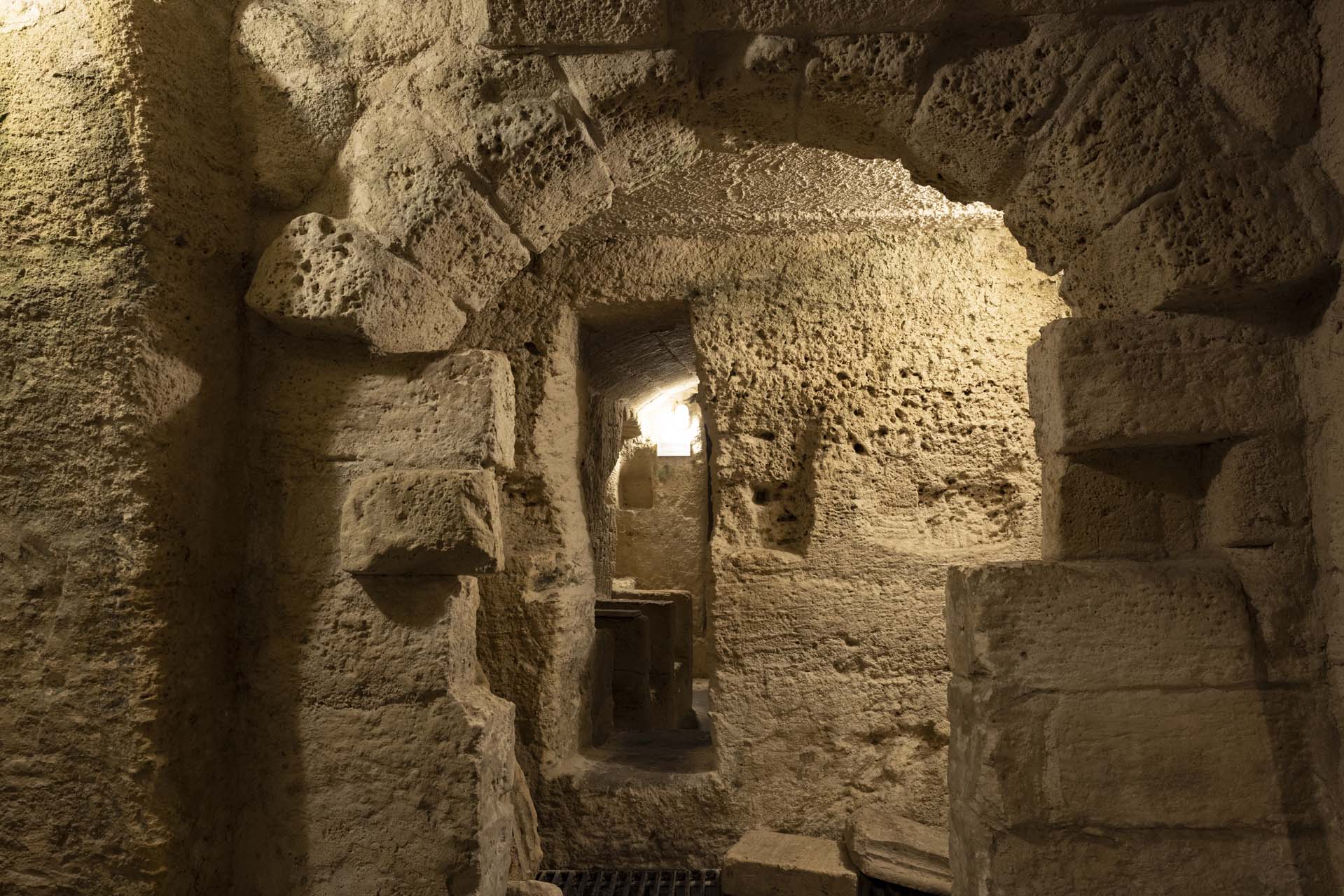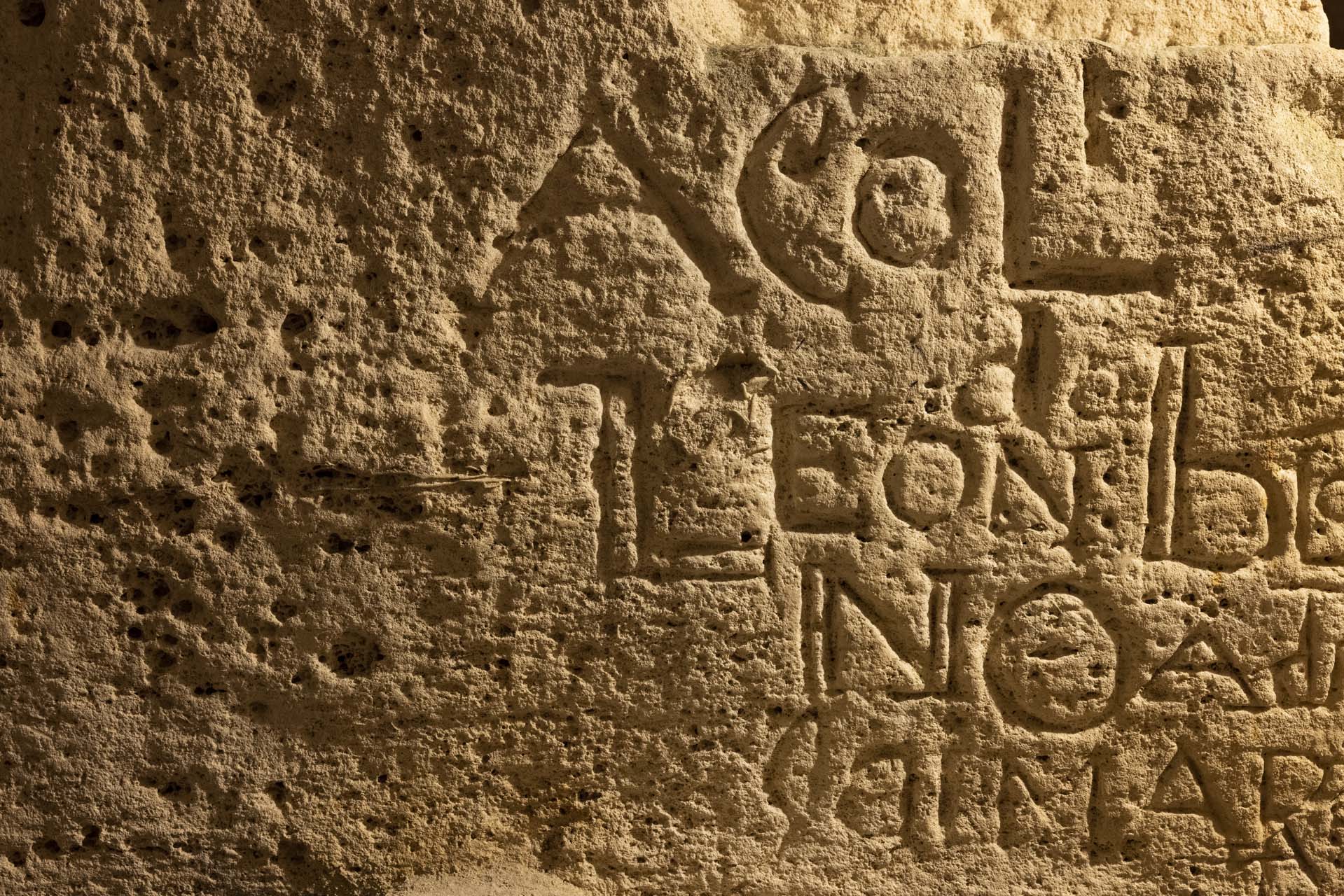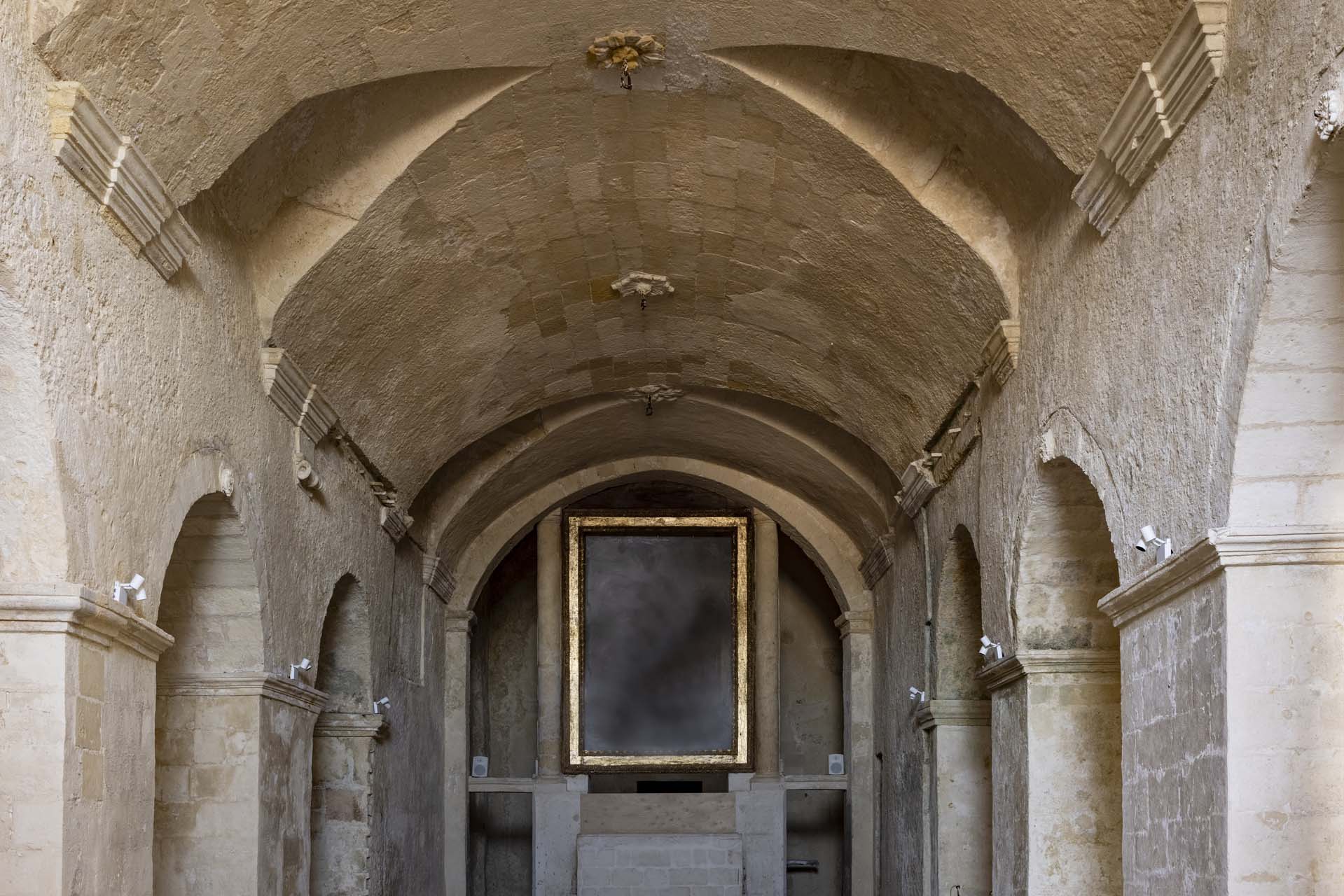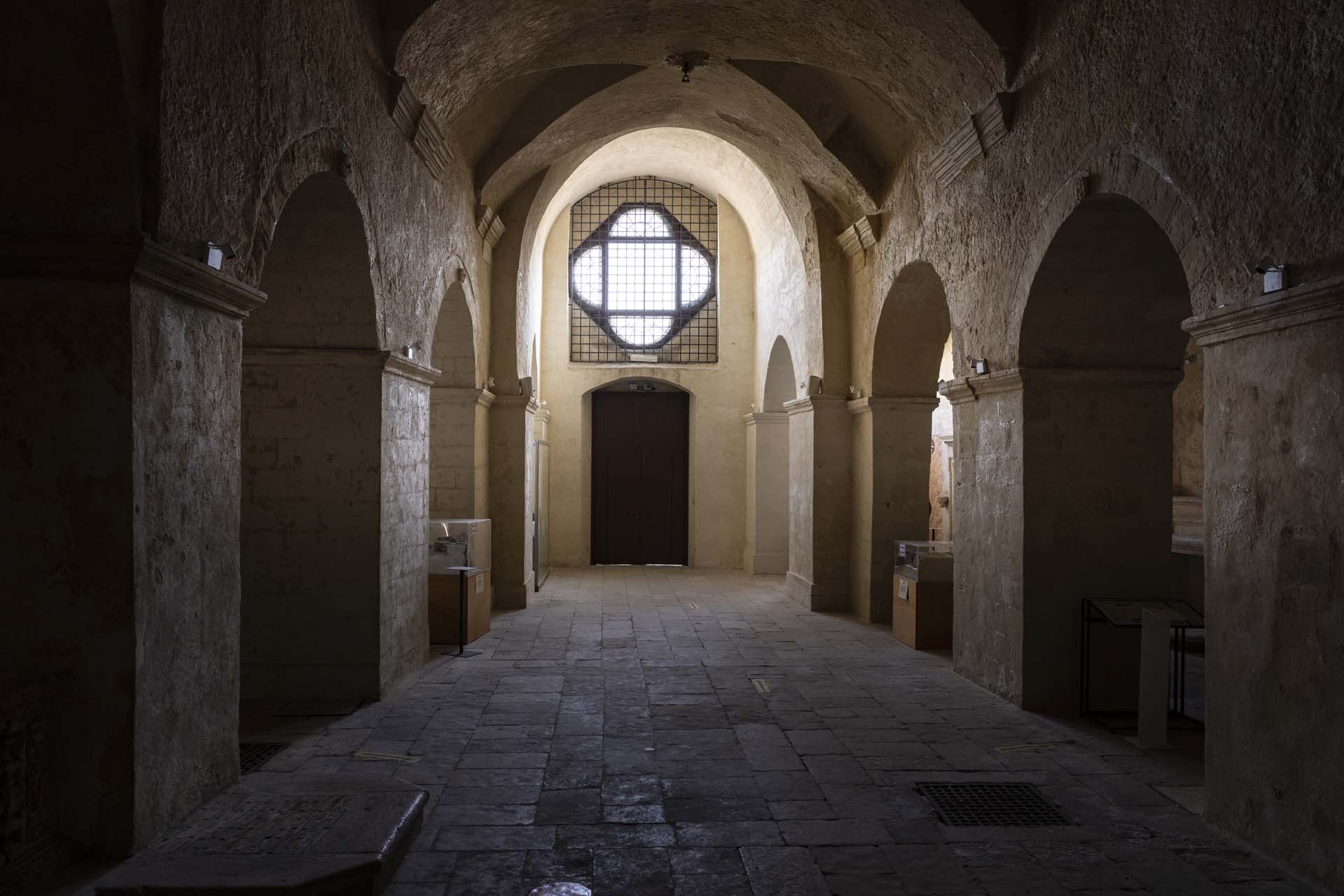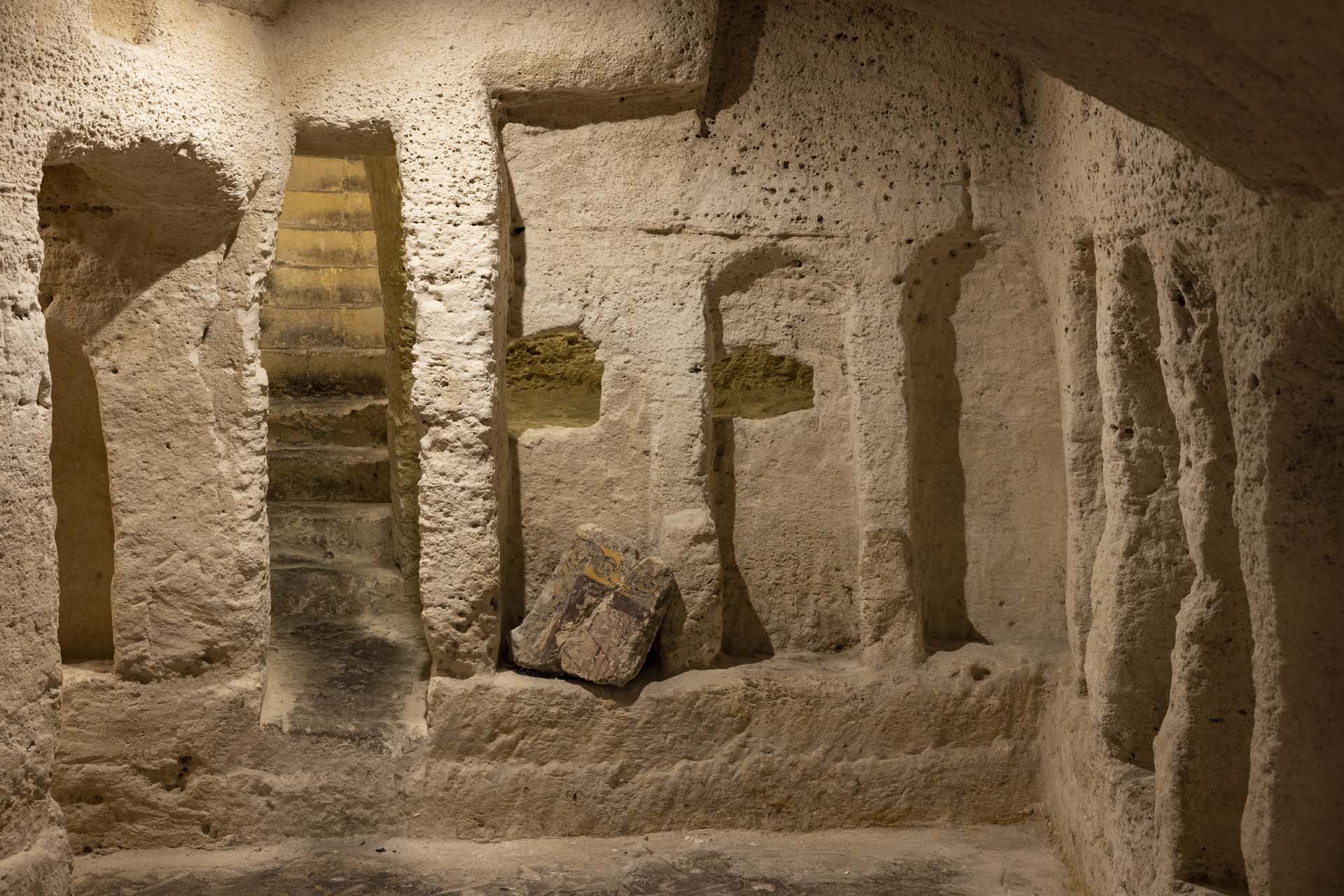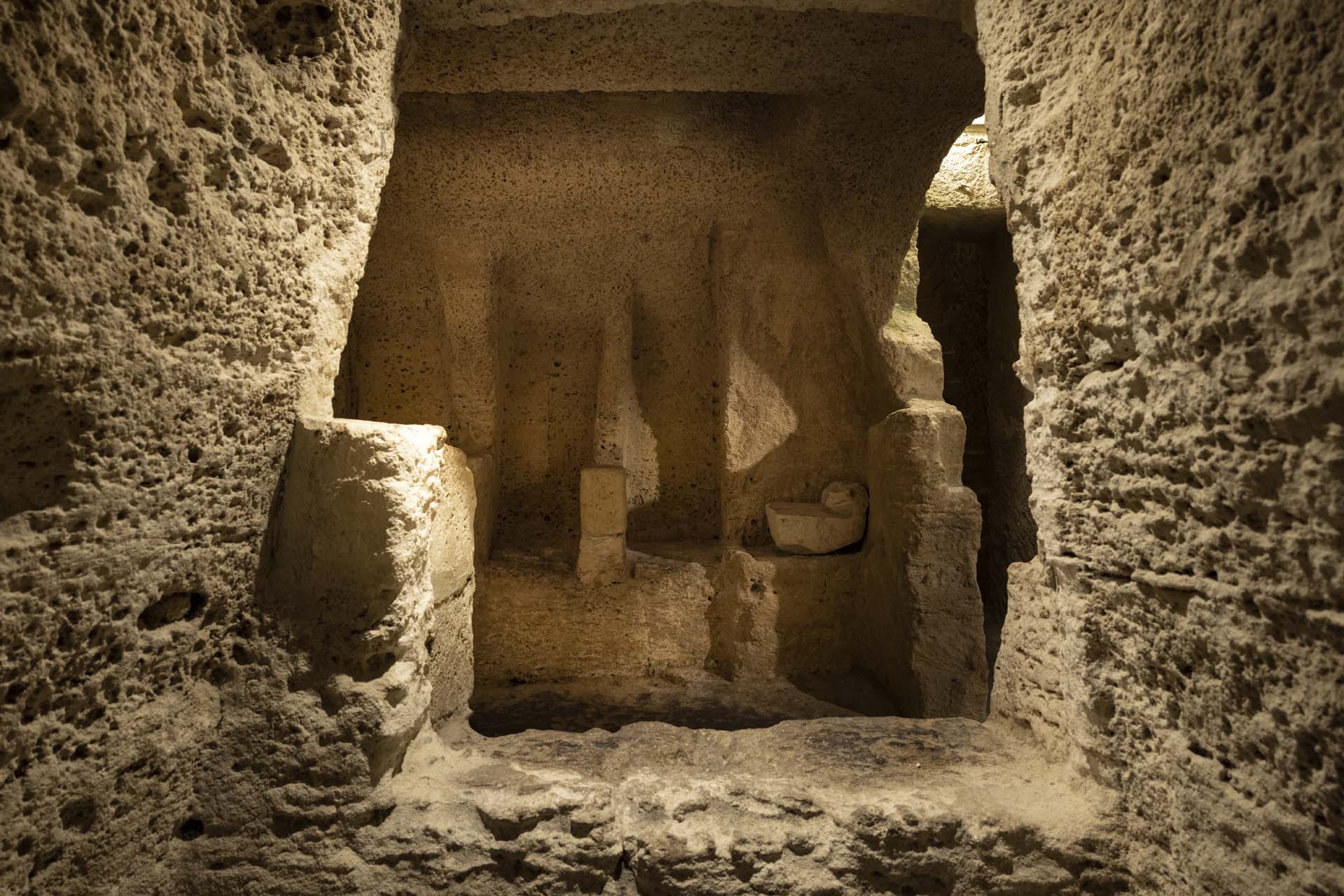San Pietro Barisano
San Pietro Barisano, originally called San Pietro de Veteribus, is the largest rock church in the city of Matera.
The archaeological investigations have made it possible to identify the first rock formation dating back to the 12th-13th centuries, below the floor.
With a first enlargement intervention between the XV and XVI centuries, the excavation of the church was deepened and the side chapels were made. Of these interventions only the terminal part of the chapel is located behind the second altar of the right aisle with frescoes of Saint Catherine of Alexandria, of the Annunciation, of St. Canio, St. Augustine, St. Eustace and St. Vito.
The second renovation, of the eighteenth century, gave the church its current form: a system with three naves, a new facade (dated 1755) and the underground rooms for the “draining” of the corpses. This funeral practice, reserved for priests or aspirants, consisted in placing the corpses dressed in sacred vestments in niches shaped in the tufa; the mortal remains were removed only at the end of the decomposition.
In 1903 due to excessive humidity, the parish was moved to the nearby church of Sant’Agostino along with most of the sacred furnishings, including the baptismal font.
In the ’60s and’ 70s, following the abandonment of the Sassi, most of the works of art were stolen or damaged.
Walking along the right aisle starting from the entrance, you will find:
> the altar of St. Joseph, on which was placed the altarpiece of the Holy Family, stolen in 1977 and of which remains part of the wooden frame;
> the altar of the Madonna della Consolazione, with the image in the tufa of the Madonna with Child crowned by angels and statues of different saints;
> the altar of the Blessed Sacrament with its precious majolica floor.
In the central nave there was the main altar – wooden – dated 1771, currently kept at the deposit of the Superintendence for Historical, Artistic and Ethno-anthropological Heritage of Basilicata. Visible the frame of the altarpiece with The coronation of the Virgin between Saints Peter and Paul, the work of the maternal artist Giovanni Donato Oppido, dated 1603 and unfortunately stolen in 1977.
In the left aisle, starting from the bottom, we observe:
> the altar of the Santissimo Crocifisso on which a 16th century wooden crucifix, placed on the main altar of the church of Sant’Agostino, was placed within the oval frame in the lamina di oro still visible. On the sides of the oval are the tufa statues of the Madonna delle Grazie and of San Michele Arcangelo; at the top, the Trinity;
> the altar of the Annunciation, with statues and furnishings in tuff, badly damaged by vandals;
> the altar of St. Mary Magdalene with a statue of St. Anthony of Padua;
At the end of the left aisle, near the entrance, you can see the pit used to merge some of the bells on site and the entrance to the “Sancta Sanctorum”, the room where the liturgical furnishings were kept, the vestments, the sacred books and the relics of the saints. Inside you can see the 16th century frescoes of the Madonna with the Child and of St. Donato the Bishop.


